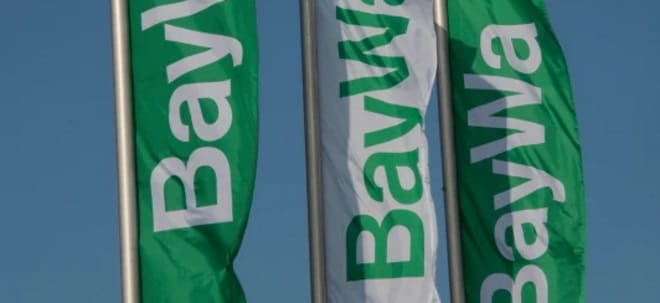Tax Tip - Self-employed? Get ready for tax season with these helpful tips from the CRA
OTTAWA, ON, June 4, 2025 /CNW/ - If you're self-employed, tax season can feel overwhelming, but the Canada Revenue Agency (CRA) is here to help you! Whether you're a sole proprietor, freelancer, or running a small business, understanding your tax obligations is key to staying on track. Here's what you need to know:
Filing and payment deadlines for self-employed individuals
If you are self-employed, or your spouse or common-law partner is self-employed, you have until June 15, 2025, to file your 2024 income tax and benefit return. Since June 15 falls on a Sunday, your return will be considered on time if the CRA receives it by June 16, 2025.
Even though you have until June 15th to file, any balance owing was still due by April 30, 2025. If you still have not paid your taxes, the CRA can work with you on a payment arrangement or a pre-authorized debit (PAD) agreement. The Payment Arrangement Calculator in your CRA account allows you to submit a request without having to contact the CRA. If your proposed payment plan doesn't meet CRA policy, a CRA officer will reach out to help you set up an acceptable arrangement.
Meeting your tax obligations as a self-employed individual
If you earned self-employment income in 2024, you must report it on your tax return. This includes income earned through gig work, social media platforms, freelancing, or running a small business. As a self-employed individual, you may have to pay:
- Personal income tax (if you are a First Nations business owner you can find information on the tax benefits and requirements that apply to you at Information of the tax exemption under Section 87 of the Indian Act)
- Canada Pension Plan contributions
- Employment Insurance premiums if you are eligible and have registered to participate
If you earn income through digital platforms (such as ride-sharing, food delivery, or freelance services), you must report it on your tax return. Gifts, tips, and donations received through online platforms are also generally considered taxable income. For more details, visit Taxes and the platform economy.
Don't forget to register for a GST/HST account if you make more than $30,000 in taxable supplies over a single calendar quarter or over the last four consecutive calendar quarters. If you are registered for GST/HST, you must file your returns electronically. If you participate in commercial ridesharing activities, the small supplier threshold does not apply, and you must register for a GST/HST account the moment you start earning revenue. Filing your GST/HST returns on time helps you avoid penalties and interest.
Reporting all of your income also ensures that the CRA has the right information to see if you qualify for benefits and credits like the GST/HST credit, the Canada Child Benefit, and other provincial or territorial programs. Filing your return on time helps you get the payments you're entitled to and prevents any interruptions to benefits you already receive.
If you have incorporated your business to provide services to one other company, you might be considered to be operating a personal services business (PSB). Tax obligations of PSBs are different from self-employed individuals. Find out more at What is a PSB.
Making payments to the CRA
If you need to make a payment, there are several convenient and secure online options:
- Using your financial institution's online banking, mobile app, or telephone service
- Using the CRA's pre-authorized debit service offered through your CRA account, which lets you:
- set up payment(s) to the CRA from a chequing account on pre-set date(s)
- pay an amount due, repay overpaid amounts, or make instalment payments
- Through the CRA's My Payment service, with your activated debit card from a participating Canadian bank or credit union with a Visa Debit or Debit Mastercard logo (does not include credit cards)
- By credit card, PayPal or Interac e-Transfer through a third-party service provider for a fee
If you still wish to make a payment in person, you can pay:
- At your Canadian financial institution with a remittance voucher. You can order personalized remittance vouchers, and in some cases, print your own. See Order remittance vouchers or payment forms
- At any Canada Post outlet, for a fee, using cash or debit card, along with a Quick-Response (QR) code that you can generate using your CRA Account
To see all the payment options, go to the Payments to the CRA page.
If you couldn't pay your full balance by April 30, 2025, the CRA may be able to help. Use the Payment Arrangement Calculator in your CRA account to set up a plan that works for you.
Free Liaison Officer service
The CRA offers a free Liaison Officer service to help small business owners and self-employed individuals understand their tax obligations.
During a meeting a liaison officer will:
- Help you better understand possible business deductions
- Explain general bookkeeping concepts and best practices, and provide recommendations to strengthen your bookkeeping system
- Explain how to avoid common tax errors
- Give you an overview of helpful online tools and electronic services offered by the CRA
- Answer your tax-related questions and address concerns
- Show you how to use the Financial Performance Data to compare your business revenues and expenses with others in the same industry
A meeting with a Liaison Officer is 100% confidential; the information you choose to discuss with a Liaison Officer will not be shared with other areas of the CRA, or anyone else.
You can request a meeting using the Liaison Officer Service Request Form - Canada.ca.
Keeping accurate records
Keeping complete and organized records will help you file your return accurately and can help you avoid issues if your return is reviewed. You should retain records for at least six years in case the CRA requests them for review.
Online tools to help you file
Sign up for direct deposit and file online to get your refund faster! If you file online and have direct deposit, you can receive your refund in as little as eight business days!
Using the CRA's digital services is the fastest and easiest way to view and manage your tax and benefit information. We encourage you to register for a CRA account before filing your return, and have all of your tax information for filing your return on hand.
The CRA's Get ready to do your taxes page has information on online filing, deadlines, and other helpful links.
Need More Information?
- Visit the Small Business and Self-Employed Income page and employer-employee relationship questions and answers for details on tax obligations and available resources.
- Check out Canada.ca/taxes for up-to-date information on filing your return.
- You can also check out our questions and answers about filing your taxes page for more answers to common questions. This page will be updated periodically to incorporate changes that may affect you during tax-filing season.
By staying informed and filing on time, you can avoid penalties and ensure you receive the benefits and credits you're entitled to. The CRA is here to help—visit Canada.ca for more tax tips and resources!
Contacts
Media Relations
Canada Revenue Agency
613-948-8366
cra-arc.media@cra-arc.gc.ca
Stay connected
- Follow the CRA on Facebook
- Follow the CRA on Twitter – @CanRevAgency
- Follow the CRA on LinkedIn
- Follow the CRA on Instagram
- Subscribe to a CRA electronic mailing list
- Add our RSS feeds to your feed reader.
- Watch our tax-related videos on YouTube
- Listen to our Taxology podcast
SOURCE Canada Revenue Agency

